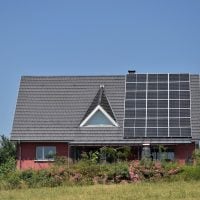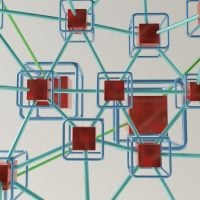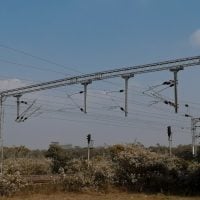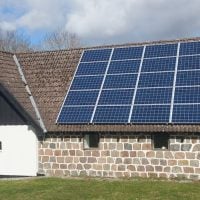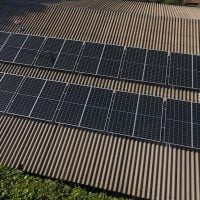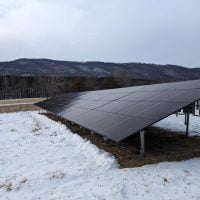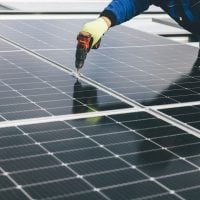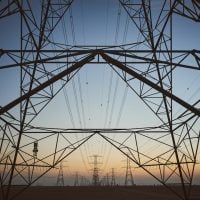In the quest for sustainable development, energy access has emerged as a critical component, particularly in developing regions like Asia. The lack of reliable and affordable energy sources hampers economic growth, limits educational opportunities, and exacerbates health issues. Donor partnerships play a pivotal role in addressing these challenges by mobilizing resources, expertise, and innovative solutions.
These collaborations between governments, international organizations, and non-governmental organizations (NGOs) are essential for creating a sustainable energy future. By pooling resources and knowledge, donor partnerships can effectively tackle the multifaceted barriers to energy access. The significance of donor partnerships extends beyond mere financial contributions; they foster a collaborative environment where stakeholders can share best practices and learn from one another.
This synergy is crucial in a region as diverse as Asia, where energy needs and challenges vary widely from one country to another. By leveraging the strengths of various partners, these collaborations can implement tailored solutions that address local contexts while contributing to broader global goals such as the United Nations Sustainable Development Goals (SDGs). Are You Working on Solar Innovation or Clean Energy Access? Join us to receive updates.
The Impact of Donor Partnerships on Energy Access in Asia
Donor partnerships have had a transformative impact on energy access across Asia, particularly in rural and underserved communities. By providing funding and technical assistance, these collaborations have enabled the deployment of renewable energy technologies such as solar, wind, and biomass. For instance, in countries like Bangladesh and India, donor-funded initiatives have facilitated the installation of solar home systems, which have brought electricity to millions of households that previously relied on kerosene lamps or candles.
This shift not only improves living conditions but also enhances educational opportunities and economic activities. Moreover, donor partnerships often emphasize capacity building within local communities. By training local technicians and entrepreneurs, these initiatives create jobs and foster a sense of ownership among beneficiaries.
This approach not only ensures the sustainability of energy projects but also empowers communities to take charge of their energy futures. The ripple effect of these partnerships can be seen in improved health outcomes, increased productivity, and enhanced quality of life for millions across the region.
Key Donor Partnerships in Asia’s Energy Access Sector
Several key donor partnerships have emerged as leaders in advancing energy access in Asia. The Global Environment Facility (GEF) is one such organization that has been instrumental in funding renewable energy projects across the continent. Through its Small Grants Programme, GEF has supported numerous community-based initiatives that promote sustainable energy solutions.
These projects often focus on integrating renewable energy into local economies, thereby enhancing resilience against climate change. Another notable partnership is the Asian Development Bank (ADB), which has been actively involved in financing large-scale energy infrastructure projects. ADB’s commitment to promoting clean energy has led to significant investments in solar and wind power projects throughout Asia.
By collaborating with governments and private sector stakeholders, ADB has facilitated the development of policies that encourage renewable energy adoption while ensuring that marginalized communities benefit from these advancements.
The Role of Government and Non-Governmental Organizations in Donor Partnerships
Governments play a crucial role in shaping the landscape of donor partnerships for energy access. By establishing favorable policies and regulatory frameworks, they can create an enabling environment for investment and innovation. For instance, countries like Vietnam have implemented feed-in tariffs that incentivize private sector investment in renewable energy projects.
Such policies not only attract donor funding but also ensure that projects align with national development goals. Non-governmental organizations (NGOs) are equally vital in bridging the gap between donors and communities. They often serve as intermediaries that facilitate communication and collaboration among various stakeholders.
NGOs bring local knowledge and expertise to the table, ensuring that projects are culturally appropriate and responsive to community needs. For example, organizations like Practical Action have successfully implemented energy access projects by engaging local communities in the design and implementation process, thereby enhancing project sustainability.
Innovative Approaches and Technologies Supported by Donor Partnerships
Donor partnerships have been at the forefront of promoting innovative approaches and technologies in the energy access sector. One such innovation is the use of pay-as-you-go (PAYG) solar systems, which allow households to access solar power without the burden of upfront costs. This model has gained traction in countries like Kenya and Bangladesh, where donor-funded initiatives have demonstrated its effectiveness in expanding energy access to low-income households.
Additionally, donor partnerships are increasingly supporting the integration of smart technologies into energy systems. For instance, smart meters and grid management systems enable better monitoring and management of energy consumption, leading to increased efficiency and reduced waste. These technologies not only enhance the reliability of energy supply but also empower consumers to make informed decisions about their energy use.
Case Studies of Successful Donor Partnerships in Energy Access
Several case studies exemplify the success of donor partnerships in advancing energy access in Asia. One notable example is the Solar Home Systems project in Bangladesh, which has been supported by various international donors including the World Bank and GEF. This initiative has successfully installed over four million solar home systems, providing electricity to approximately 20 million people.
The project has not only improved living standards but has also created a thriving market for solar technology, generating jobs and stimulating local economies. Another compelling case is the Clean Energy for Rural Areas project in India, funded by the United Nations Development Programme (UNDP) and other partners. This initiative focuses on providing renewable energy solutions to remote villages through community participation.
By involving local stakeholders in decision-making processes, the project has ensured that energy solutions are tailored to meet specific community needs while fostering a sense of ownership among beneficiaries.
Challenges and Opportunities in Donor Partnerships for Energy Access
Despite the successes achieved through donor partnerships, several challenges persist in the energy access sector. One major hurdle is the lack of coordination among various stakeholders, which can lead to duplication of efforts and inefficient use of resources. To address this issue, it is essential for donors, governments, and NGOs to establish clear communication channels and collaborative frameworks that promote synergy among different initiatives.
On the other hand, there are significant opportunities for enhancing donor partnerships in energy access. The growing emphasis on climate change mitigation presents a unique chance for stakeholders to align their efforts with global sustainability goals. By integrating climate resilience into energy access projects, donor partnerships can not only improve energy security but also contribute to broader environmental objectives.
The Future of Donor Partnerships in Advancing Energy Access in Asia
Looking ahead, the future of donor partnerships in advancing energy access in Asia appears promising yet challenging. As countries strive to meet their commitments under international climate agreements, there will be an increasing demand for innovative financing mechanisms that can support sustainable energy projects. Blended finance models that combine public funding with private investment could play a crucial role in mobilizing resources for large-scale initiatives.
Furthermore, as technology continues to evolve rapidly, donor partnerships must remain adaptable to leverage new solutions effectively. Embracing digital platforms for project management and stakeholder engagement can enhance transparency and accountability while fostering collaboration among diverse partners.
The Importance of Monitoring and Evaluation in Donor Partnerships
Monitoring and evaluation (M&E) are critical components of successful donor partnerships in energy access. Robust M&E frameworks enable stakeholders to assess project performance, identify areas for improvement, and ensure accountability to beneficiaries and funders alike. By establishing clear indicators and benchmarks, partners can track progress toward achieving energy access goals while making data-driven decisions.
Moreover, M&E processes facilitate knowledge sharing among stakeholders by documenting lessons learned and best practices from various projects. This information can inform future initiatives and contribute to building a repository of knowledge that enhances the overall effectiveness of donor partnerships.
Lessons Learned from Donor Partnerships in Energy Access
The experiences gained from various donor partnerships offer valuable lessons for future initiatives aimed at improving energy access. One key takeaway is the importance of community engagement throughout the project lifecycle. Involving local stakeholders from the outset ensures that projects are culturally relevant and responsive to community needs, ultimately leading to greater sustainability.
Another lesson is the necessity of flexibility in project design and implementation. Given the dynamic nature of energy markets and technological advancements, donor partnerships must be willing to adapt their strategies based on emerging trends and feedback from beneficiaries.
Recommendations for Strengthening Donor Partnerships in Energy Access in Asia
To strengthen donor partnerships in advancing energy access across Asia, several recommendations can be made. First, fostering greater collaboration among stakeholders is essential for maximizing resources and minimizing duplication of efforts. Establishing multi-stakeholder platforms can facilitate dialogue and coordination among donors, governments, NGOs, and private sector actors.
Second, investing in capacity building for local communities is crucial for ensuring project sustainability. By equipping individuals with the skills needed to maintain and operate renewable energy systems, donor partnerships can empower communities to take ownership of their energy futures. Lastly, embracing innovative financing mechanisms such as blended finance can unlock new sources of funding for energy access projects.
By leveraging both public and private investments, donor partnerships can scale up successful initiatives while ensuring long-term sustainability. In conclusion, donor partnerships play a vital role in advancing energy access across Asia by mobilizing resources, fostering collaboration, and promoting innovative solutions. While challenges remain, there are significant opportunities for enhancing these partnerships to create a more sustainable energy future for millions across the region.
In the context of transformative donor partnerships enhancing energy access in Asia, it’s essential to recognize the broader spectrum of funding opportunities that support various developmental goals worldwide. For instance, the Daphne Child Sub-Granting and Capacity Building Programme 2024 offers a significant opportunity to bolster initiatives focused on child welfare and capacity building. While this program primarily targets child protection and empowerment, it exemplifies the diverse range of funding avenues available to address critical global issues, much like the partnerships driving energy access in Asia. Such initiatives collectively contribute to sustainable development by addressing different facets of societal needs.

